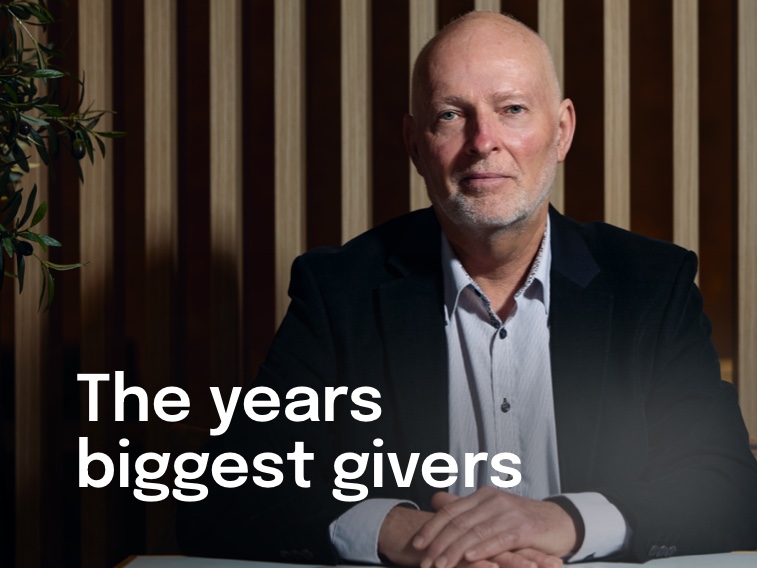Luxury property performance in the spotlight in our annual review as trophy homes continue to set new records


Article
Philanthropy works best when the givers are passionate about the cause. To achieve real change it may mean taking risk, and even failure.

In the Americas, the act of giving to support the community dates back centuries. In Europe, its multiples of that. In Australia, charitable giving is a newer proposition, but it still has some history. For instance, the iconic Alfred Hospital in Melbourne was established in 1871, and it was the generosity of the community and their donations that helped create the institution. The Alfred’s good work caring for people carries on today, and so do the donations that enable it to continue to maintain leading edge medical services and research.
Over the decades there have been a number of publicly acknowledged charitable families and individuals. In the 1920’s and 1930’s the Myer family Christmas lunches were part of the media’s annual diary. In the decades that followed the charitable donations of the Fairfax’s, Potter’s and Pratt’s, to name just a few, received considerable public attention, as did the philanthropic work of Dick Smith in the 1980’s and 1990’s following the sale of his chain of electronic goods stores and subsequent aviation adventures that gained him a number of world records.
Publicity is an important aspect of charity. Leaving the ego boost aside, it helps to encourage other wealthy people and everyday Australians to dig a bit deeper in support of their favourite charities. For the past seven years, The Australian Financial Review has published the Top 50 Philanthropist, a who’s who of givers and the causes they support. In the last financial year to June 30 the Top 50 gave away $1.1 billion, up from $942 million the previous year. Here is the Top 50 List.
Compiled by co-founder of JBWere Philanthropic Services, John McLeod, the list continues to add new charitable donors each year. Some of those new entrants have been silent donors for years, and it has been the good publicity the list generates and lack of scorn or ridicule that has encouraged them to come forward. In time the list will also become a source of truth for where our top givers concentrate their efforts, and already since the list was first published in 2017, new trends are emerging.
While traditional philanthropists like the Potters and Myers are still on the list, the top givers are in many cases relative newcomers. Topping the list with a stupefying $165 million spend this year was MYOB founder Craig Winkler and his wife, Di, through their privately run Yajilarra Trust. The couple support indigenous peoples, combating climate change, and disability causes. They have a goal to be drivers of change by utilising the bulk of the funds in the trust for charitable activities over the next 10 or so years.
Second on the list through the Minderoo Foundation was Andrew Forrest and wife Nicky. Founded in 2001 the Foundation’s charitable causes have been well documented, with about $3 billion to date donated to address issues including modern slavery, ocean health, cancer, and indigenous causes.
An interesting addition to the list and coming in at 4th with a $100 million spend was Canadian-born businessman, Geoffrey Cumming and his wife Anna. Few had heard of the couple until mid-last year, when they pledged $250 million over 20 years to found and fund a global pandemic therapeutics centre in Melbourne.
Third on the list is a more traditional example of how charitable foundations are established. While Paul Ramsay donated upwards of $1 billion to charity during his life, it was the $3 billion injected into the Paul Ramsay Foundation following his death in 2014 that will create a legacy by helping end cycles of disadvantage, through work that will continue for many decades, or even centuries, to come. Others like property developer Stan Perron and transport magnate Lindsay Fox are now sizeable donors, building their fortune first and giving substantially later in life.
McLeod says while traditional areas for philanthropy like universities, medical research and the arts were still receiving much of available donations, many of the newcomers were directing their efforts towards addressing current problems facing society, like climate change, indigenous affairs, better government and affordable housing.
For example, in the past decade the traditional givers like the Myers and Potters have not reduced their spend but newcomers like Atlassian co-founder, Mike Cannon Brookes, has emerged as a climate change investor and activist while Sophie Oh and Grant Rule have devoted the bulk of the wealth from the billion dollar sale of a SMS technology business to enhancing the effectiveness and capability of our democratic institutions and government through the Susan McKinnon Foundation, which they founded in 2015.
McLeod notes that if you take in the entire $200 billion of annual income earned by the charitable sector, the proportion donated by individuals, families and corporates is about $13 billion. Of that $13 billion, about $1 billion or again 7 per cent comes from the Top 50 givers.
McCleod says that 7 per cent from the top donors is a vital component: “The best outcome is when passionate people that believe in a cause pursue that passion. Wealthy people can often entice others to join their cause, and they may have other influences in areas like government. This cohort of givers should be at the cutting edge of risk taking to make a real change – but that risk must be acknowledged, as when you are engineering change, sometimes there will be failures, and it is ok for philanthropy to fail.”
He also says when someone brings large sums to a cause they may start off with relatively little knowledge of their area of interest: “Philanthropists often enter into a steep learning curve, and they can become real experts in their chosen areas. But it also means they learn the nuances of their cause, and while they may start more broadly, it can end up going off onto a more specialised tangent. It’s not just the money they bring, it’s the experience and connections.”
McLeod says there is still a lot of capacity for the ultra-wealthy to keep giving: A rule of thumb that could be used is for the people to give away 1% of their net wealth each year. If you go down the AFR Top 100 Rich List (previously the BRW Rich List) there are still a lot not achieving that. If we look more broadly at high net worth individuals, the donations of their US equivalents are about double of what we see in Australia.
Part of the reason is that Australia has a better welfare safety net to assist the disadvantaged, whereas in the US charities play a larger role in that space. But it’s also a structural issue. In the US, you can bequeath assets to charitable causes and receive an immediate tax deduction. The size of the deduction is dependent on several factors, like age and the nature of the gift, however, it encourages people to think about the causes they support and how they can continue to support them after they have gone.
While significant philanthropy has always generated media attention, there is only so much space in newspapers and media broadcasts. McLeod expects it will continue to be the newcomers, passionate about particular causes, who will increasingly be the “face” of philanthropy, and that these causes will increasingly be a mirror of the issues facing society.
Disclaimer:
The information contained in this article is gathered from multiple sources believed to be reliable as of the date of this article and is intended to be of a general nature only. It has been prepared without taking into account any person’s objectives, financial situation or needs. Before acting on this information, we recommend that you consider whether it is appropriate for your circumstances and that you seek independent legal, financial and taxation advice before acting on any information in this article. JBWere Limited ABN 68 137 978 360 AFSL 341162 (JBWere) is a wholly owned subsidiary of National Australia Bank Limited
©2023 National Australia Bank Limited ABN 12 004 044 937 AFSL and Australian Credit Licence 230686.
© National Australia Bank Limited. ABN 12 004 044 937 AFSL and Australian Credit Licence 230686.